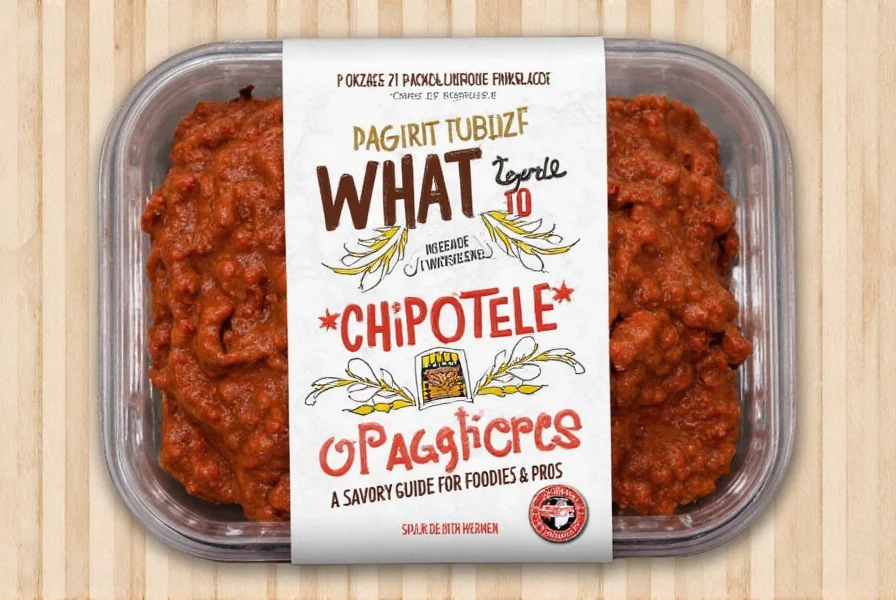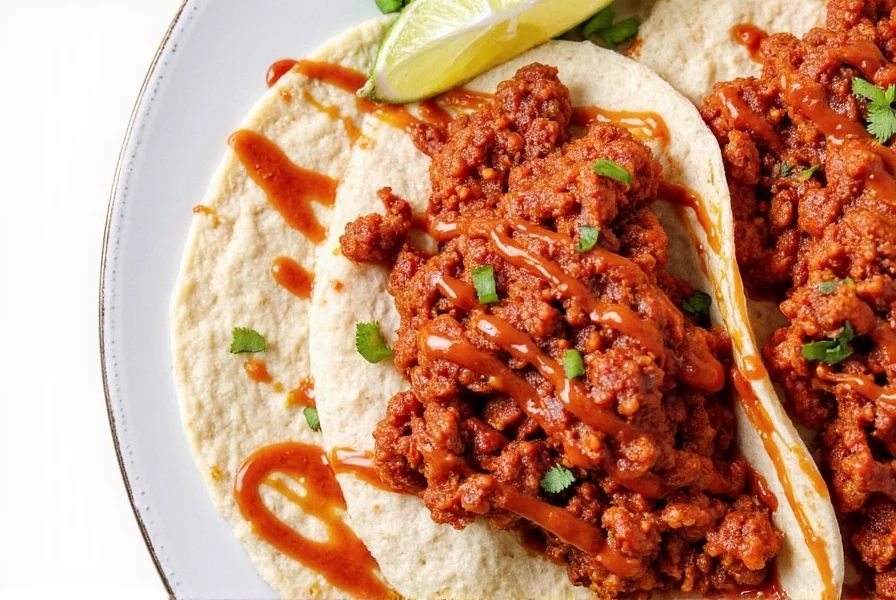Smoky Heat & Flavor: The Ultimate Guide to Chipotle and Adobo Sauce
Table of Contents
Introduction to Chipotle and Adobo Sauce
Chipotle and adobo sauce are two of the most iconic elements in global spice traditions, especially in Latin American cuisine. These ingredients bring a smoky, rich, and slightly sweet flavor that can elevate any dish from tacos to stews. But what exactly is chipotle? What is adobo sauce? And how do they work together? This guide will take you through everything you need to know about these beloved ingredients.





The History Behind Chipotle and Adobo Sauce
The origins of chipotle date back to ancient Mesoamerican cultures, where chili peppers were cultivated and used in cooking for centuries. The word 'chipotle' comes from the Nahuatl language, meaning 'smoked chili.' Traditionally, jalapeños or other peppers were dried over an open fire, giving them their signature smoky flavor and deep red color.
Adobo sauce, on the other hand, has its roots in Spanish culinary tradition. Originally used as a preservation method for meats, it evolved into a flavorful marinade and seasoning. In Mexico, adobo sauce often includes ingredients like garlic, vinegar, oregano, and citrus, making it a perfect complement to the smokiness of chipotle.
The combination of chipotle and adobo sauce became popular in Mexican cuisine, especially in dishes like enchiladas, burritos, and grilled meats. Today, it's a staple in many kitchens around the world.
Flavor Profile and Uses
Chipotle peppers have a unique flavor profile—smoky, slightly sweet, and mildly spicy. When combined with adobo sauce, which adds tanginess, depth, and a hint of acidity, the result is a complex and versatile flavor that can be used in a variety of ways.
Here are some common uses:
- Tacos and Burritos: A classic use for chipotle and adobo sauce is to add it to tacos, burritos, and fajitas for a smoky kick.
- Sauces and Dips: Mix chipotle and adobo sauce with sour cream or mayonnaise to create a delicious chipotle aioli or dip.
- Marinades: Use the sauce to marinate chicken, pork, or vegetables before grilling or roasting.
- Stews and Soups: Add a spoonful of chipotle and adobo sauce to soups, stews, or chili for extra depth and heat.
- Cooking Enhancer: Even a small amount of this combo can elevate the flavor of any dish, from eggs to pasta.
One of the best things about chipotle and adobo sauce is their versatility. Whether you're looking for a bold flavor or a subtle heat, this duo has something to offer.
Chipotle vs. Other Smoked Peppers
While chipotle is one of the most well-known smoked peppers, there are several others that share similar characteristics. Here's a quick comparison to help you understand the differences:
| Pepper | Origin | Flavor Profile | Heat Level | Common Uses |
|---|---|---|---|---|
| Chipotle | Mexico | Smoky, slightly sweet, mild to medium heat | Mild to Medium | Tacos, sauces, stews |
| Chipotle de árbol | Mexico | Smoky, fruity, medium to hot | Medium to Hot | Marinades, salsas, rubs |
| Guajillo | Mexico | Earthy, tangy, medium heat | Medium | Chiles rellenos, moles, stews |
| Poblano | Mexico | Earthier, less smoky, mild heat | Mild | Chiles rellenos, salsas, soups |
| Ancho | Mexico | Winy, sweet, mild to medium heat | Mild to Medium | Moles, enchiladas, sauces |
As you can see, each pepper has its own distinct flavor and uses. Chipotle stands out for its smoky and slightly sweet profile, making it a favorite among both chefs and home cooks.
Cooking Tips and Tricks with Chipotle and Adobo Sauce
If you're new to working with chipotle and adobo sauce, here are some tips to help you make the most of these ingredients:
- Start Small: Chipotle and adobo sauce can be quite strong, so start with a small amount and adjust to taste.
- Use Fresh Ingredients: If possible, use fresh chipotle peppers instead of canned ones for a more authentic flavor.
- Blend It Up: Blend chipotle and adobo sauce with other ingredients like avocado, lime, or cilantro to create a smooth and creamy sauce.
- Freeze for Later: Store unused chipotle and adobo sauce in the freezer for future use. It keeps well and adds great flavor when thawed.
- Experiment: Don’t be afraid to experiment with different combinations. Try adding chipotle and adobo sauce to grilled vegetables, seafood, or even desserts for a unique twist.
Remember, the key to using chipotle and adobo sauce is balance. Too much can overpower your dish, but just the right amount can transform it into something truly special.
Buying Guide for Chipotle and Adobo Sauce
Whether you're shopping at a local market or browsing online, knowing what to look for when buying chipotle and adobo sauce can make all the difference. Here’s a detailed guide to help you choose the best products:
Types of Chipotle
There are two main types of chipotle available:
- Dried Chipotle Peppers: These are whole, smoked peppers that can be rehydrated and used in recipes. They offer a more intense flavor and are ideal for those who want to control the heat level.
- Canned Chipotle in Adobo: These are pre-prepared peppers in a sauce, ready to use straight from the can. They’re convenient for quick meals and are widely available in grocery stores.
Choosing the Right Adobo Sauce
When selecting adobo sauce, look for a product that contains natural ingredients and minimal preservatives. Some key features to consider include:
- Ingredients: High-quality adobo sauce should include garlic, vinegar, oregano, and sometimes citrus or chili powder.
- Consistency: A good adobo sauce should be thick and rich, not too runny or watery.
- Flavor: The sauce should have a balanced mix of tangy, savory, and slightly sweet notes.
Recommended Products
Here are some top-rated products that you might want to try:
- La Costeña Chipotle in Adobo:
- Features: Made with jalapeño peppers, garlic, vinegar, and oregano.
- Advantages: Smooth texture, balanced flavor, and easy to use.
- Use Cases: Great for tacos, marinades, and sauces.
- Target Audience: Home cooks and food enthusiasts.
- Suitable Occasions: Weeknight dinners, casual gatherings, and family meals.
- Las Palmas Chipotle Peppers in Adobo:
- Features: Uses organic jalapeños and traditional adobo spices.
- Advantages: Organic, no artificial additives, and rich in flavor.
- Use Cases: Ideal for authentic Mexican dishes and gourmet cooking.
- Target Audience: Health-conscious consumers and serious cooks.
- Suitable Occasions: Special occasions, dinner parties, and recipe experimentation.
- Trader Joe’s Chipotle in Adobo:
- Features: Affordable, high quality, and widely available.
- Advantages: Versatile and budget-friendly.
- Use Cases: Perfect for everyday cooking and quick meals.
- Target Audience: Budget-conscious cooks and busy families.
- Suitable Occasions: Casual meals, snacks, and last-minute recipes.
These products offer a range of options depending on your needs, whether you're looking for convenience, authenticity, or affordability.
A sentence that expands on the chipotle and adobo sauce: Combining the smoky depth of chipotle with the tangy richness of adobo sauce creates a powerful flavor that enhances any dish, from simple weeknight meals to elaborate feasts.
Conclusion
Chipotle and adobo sauce are more than just ingredients—they’re a gateway to a world of smoky, rich, and flavorful cooking. Whether you're a seasoned chef or a curious home cook, these two staples offer endless possibilities for creativity in the kitchen.
From their deep historical roots to their modern-day versatility, chipotle and adobo sauce continue to captivate palates around the globe. By understanding their history, flavor profiles, and proper usage, you can unlock the full potential of these amazing ingredients.
So next time you reach for a bottle of adobo sauce or a can of chipotle peppers, remember the story behind them—and the incredible flavors they bring to your plate.











 浙公网安备
33010002000092号
浙公网安备
33010002000092号 浙B2-20120091-4
浙B2-20120091-4